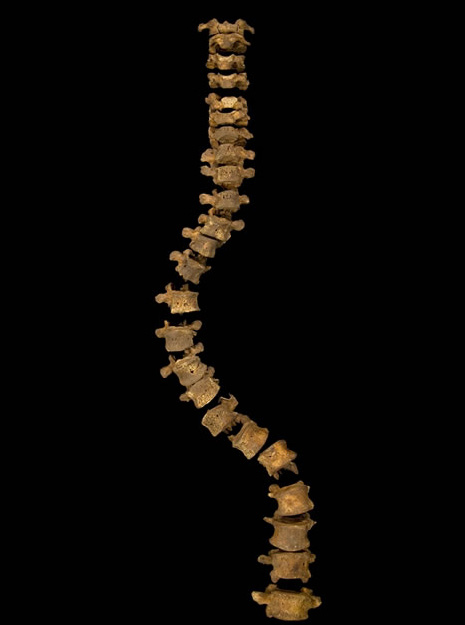Why Richard III Still Ignites Passion

More than a month has passed since archaeologists announced they'd found the bones of Richard III under a parking lot in Leicester, and the headlines have mostly moved on. But for many, the lure of King Richard III is just beginning.
Richard III enthusiasts, or Ricardians, as they are known, have societies in both the United Kingdom and the United States. The discovery of the bones of the medieval king has only swelled their ranks. At the same time, the reburial of the king has sparked strong opinions. Why does this particular monarch incite such fascination? Fans say his shrouded history is a major draw.
"He's just such an enigmatic figure, and people are drawn to that, because there's such mystery about him," said Molly McAleavey, a Denver-based member of the Richard III Foundation, one of the societies dedicated to the king. "What was he like, really? What is the truth?"
Richard's mystery
Richard III was king of England from 1483 to 1485, but played an important role as a military commander prior to his monarchy, during the reign of his brother Edward IV. His brother's young sons weren't seen in public after Richard took the throne, leading to speculation that he had them murdered.
Those accusations are just the tip of the iceberg. After Richard III died during the War of the Roses, an English civil war, the next dynasty (the Tudors) did what they could to smear his name. William Shakespeare later wrote a play, "Richard III," drawing heavily on these portrayals of the king as purely evil.
The Shakespeare play was the point of entry for many a Richard enthusiast, who tend to be history buffs in general.
Sign up for the Live Science daily newsletter now
Get the world’s most fascinating discoveries delivered straight to your inbox.
"I've always been interested in history," said Sandra Wadley, the secretary and one of the founding members of The Society of Friends of King Richard III, based in York, England. "I just didn't think anybody could be as black as William Shakespeare made out this man to be." [Gallery: The Discovery of Richard III]
Another fictional portrayal, in the detective novel "The Daughter of Time" (Peter Davies, 1951), drew in other Richardians. That book features a Scotland Yard inspector unraveling the history of Richard and concluding that he was innocent of historical charges of villainy.
Rediscovering Richard
Many modern-day Richardians agree the monarch was falsely vilified.
"When you read about what Richard did with his parliament and how he behaved in military matters, you find quite an extraordinary character," said Wendy Moorhen, the deputy chair of the Richard III Society, which was instrumental in organizing the excavation for the king's bones.

Enthusiasts such as Moorhen don't want to remake Richard in the image of a saint, but they do want to rehabilitate his image from that of the twisted hunchback with the withered arm portrayed by Shakespeare. The discovery of the skeleton has helped, Moorhen said: It's now known that Richard III did have scoliosis, a curvature of the spine. But he wasn't a hunchback, nor was there anything apparently wrong with his arm.
"I think it demonstrates a strength of character in Richard, that despite that he had this problem, he still rode, he could still fight, he could still lead in battle," Moorhen said.
The discovery of the bones was a day of excitement for Ricardians both in the United Kingdom and abroad. "It's absolutely astounding," said Jonathan Hayes, the chairman of the American branch of the Richard III society.
Burial controversy
The saga has not been a completely smooth one, however. The decision by the University of Leicester (which has legal exhumation and reburial rights) to inter Richard III in Leicester Cathedral upset some Ricardians who wanted to see his body returned to York, where he spent much of his life. Last week, Hugh Bayley of the British Labour Party said during a debate that some of the mail over the issue had been "frankly inflammatory."
It's not clear who sent the angry missives, and Ricardians contacted by LiveScience seemed eager to stay above the fray.
"I think most of the members of the Society are less interested in the actual location than in making sure that the reburial is both dignified and respectful of his role as an anointed English monarch," Hayes said.
Wadley, who would have liked to see Richard III return to York, said she expected that he'd be interred in Leicester — and she was looking on the bright side.
"He finally gets to rest not under a car park, but under proper, consecrated ground," she said.
Editor's note: This story has been updated to correct the spelling of "Ricardians."
Follow Stephanie Pappas on Twitter and Google+. Follow us @livescience, Facebook & Google+. Original article on LiveScience.com.

Stephanie Pappas is a contributing writer for Live Science, covering topics ranging from geoscience to archaeology to the human brain and behavior. She was previously a senior writer for Live Science but is now a freelancer based in Denver, Colorado, and regularly contributes to Scientific American and The Monitor, the monthly magazine of the American Psychological Association. Stephanie received a bachelor's degree in psychology from the University of South Carolina and a graduate certificate in science communication from the University of California, Santa Cruz.









